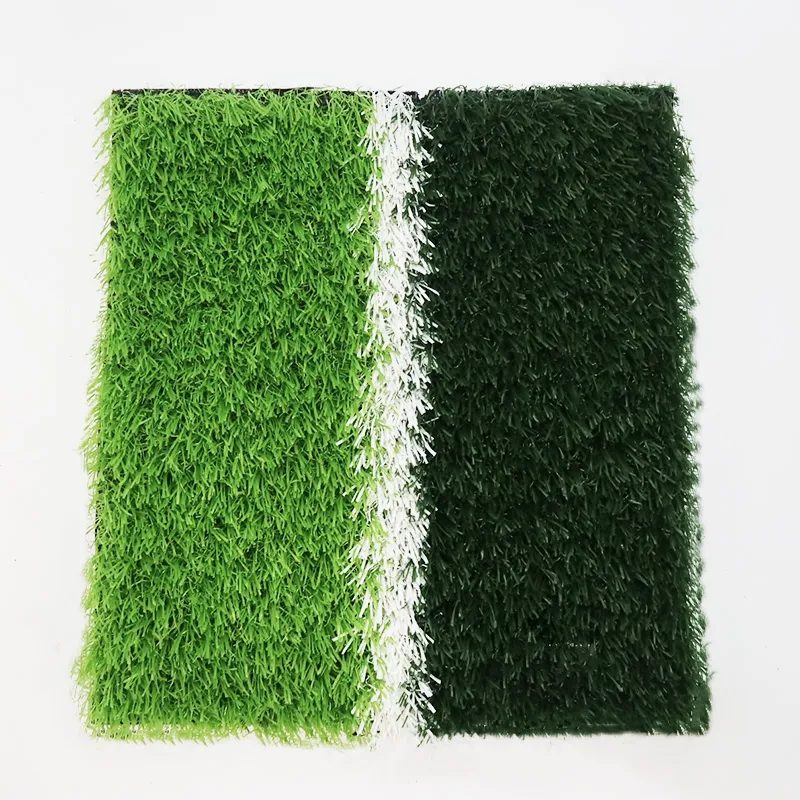
- Afrikaans
- Arabic
- Belarusian
- Bengali
- Czech
- Danish
- Dutch
- English
- Esperanto
- Estonian
- Finnish
- French
- German
- Greek
- Hindi
- Hungarian
- Icelandic
- Indonesian
- irish
- Italian
- Japanese
- kazakh
- Rwandese
- Korean
- Kyrgyz
- Lao
- Latin
- Latvian
- Malay
- Mongolian
- Myanmar
- Norwegian
- Persian
- Polish
- Portuguese
- Romanian
- Russian
- Serbian
- Spanish
- Swedish
- Tagalog
- Tajik
- Thai
- Turkish
- Turkmen
- Ukrainian
- Urdu
- Uighur
- Uzbek
- Vietnamese
Exploring the Benefits of Artificial Grass in Sports Fields and Recreational Areas
Oct . 11, 2024 23:46 Back to list
The Expanding Field of Artificial Grass A Modern Solution for Various Applications
Artificial grass, also known as synthetic turf, has evolved significantly over the years, transforming from a niche novelty into a ubiquitous solution across various fields. The appeal of artificial grass spans multiple domains, including sports, landscaping, and environmental sustainability. This article explores the diverse applications of artificial grass, its benefits, and the future prospects of this innovative product.
Sports Fields and Recreational Areas
One of the most prominent uses of artificial grass is in sports fields and recreational areas. Initially developed in the 1960s, synthetic turf was first introduced to venues like the Astrodome in Houston, Texas. Since then, it has been adopted by schools, colleges, and professional sports leagues worldwide. Artificial grass allows for year-round play, unaffected by inclement weather or poor soil drainage. This capability has made it particularly appealing for football, soccer, and baseball fields, where consistent playability is essential.
Additionally, the durability of synthetic turf minimizes maintenance costs and efforts. Unlike natural grass, which requires regular mowing, watering, and fertilizing, artificial grass stays lush and green, reducing the burden on groundskeepers. Moreover, innovations in manufacturing have led to safer playing surfaces that can withstand heavy use without significant wear, making them ideal for both training and competition.
Landscaping and Residential Use
Artificial grass has also gained immense popularity in residential landscaping. Homeowners are increasingly opting for synthetic turf as a low-maintenance alternative to traditional lawns. It provides an aesthetically pleasing green space without the hassle of upkeep. This is particularly appealing in urban areas where water conservation is critical, as artificial grass significantly reduces water consumption.
Furthermore, synthetic turf is ideal for pet owners. It is durable enough to withstand heavy foot traffic from pets, and its drainage systems can handle waste disposal efficiently. Many products are now designed with antimicrobial properties, ensuring a hygienic environment for pets and their owners alike. This combination of practicality and visual appeal makes artificial grass an attractive option for modern landscaping.
Environmental Implications
fields artificial grass

From an environmental perspective, the benefits of artificial grass are noteworthy. As climate change and water scarcity become increasingly pressing issues, the utilization of synthetic turf can significantly contribute to water conservation efforts. Traditional lawns consume a staggering amount of water for irrigation, whereas artificial grass requires none, aside from occasional rinsing.
Additionally, the advancements in the recycling of synthetic materials are promising. Companies are now developing methods to recycle old artificial grass into new products, thereby reducing landfill waste. This circular economy approach is essential for promoting sustainability within the industry and mitigating environmental impact.
Challenges and Considerations
Despite its advantages, the use of artificial grass is not without challenges. Concerns about heat retention in synthetic surfaces, especially in warmer climates, have prompted research into materials and technologies that mitigate this issue. Also, while many synthetic turfs are designed to be environmentally friendly, the production and disposal processes can have negative environmental impacts if not managed properly.
Another consideration is the potential health concerns associated with the materials used in artificial grass, particularly in older installations that may have contained harmful chemicals. As such, it is crucial for consumers to choose reputable manufacturers who adhere to safety standards.
Future Prospects
Looking ahead, the future of artificial grass appears bright. Ongoing research and development are focused on improving the materials used to create synthetic turf, enhancing its durability and environmental friendliness. Innovations in technology, such as infill materials that cool the surface and mimic natural grass behavior, are paving the way for safer, more efficient products.
In conclusion, artificial grass has carved a prominent niche in various fields, proving itself as a versatile, sustainable, and practical solution for many applications. As technology advances and awareness of environmental issues grows, the role of synthetic turf is likely to expand even further, providing greener alternatives in our increasingly urbanized world. Whether for sports, landscaping, or water conservation, artificial grass is set to remain a vital component of our outdoor environments.
-
The Benefits of Artificial Turf for Indoors
NewsJul.15,2025
-
How Artificial Grass Suppliers Ensure Quality Products
NewsJul.15,2025
-
Artificial Grass and Pets: A Space for Relaxation
NewsJul.08,2025
-
Balcony & Outdoor Decoration with Artificial Grass
NewsJul.08,2025
-
Best Indoor Artificial Grass for Home
NewsJul.07,2025
-
Best Pet Turf for Dogs: Safe & Durable Artificial Grass Options
NewsJul.07,2025
Products categories









